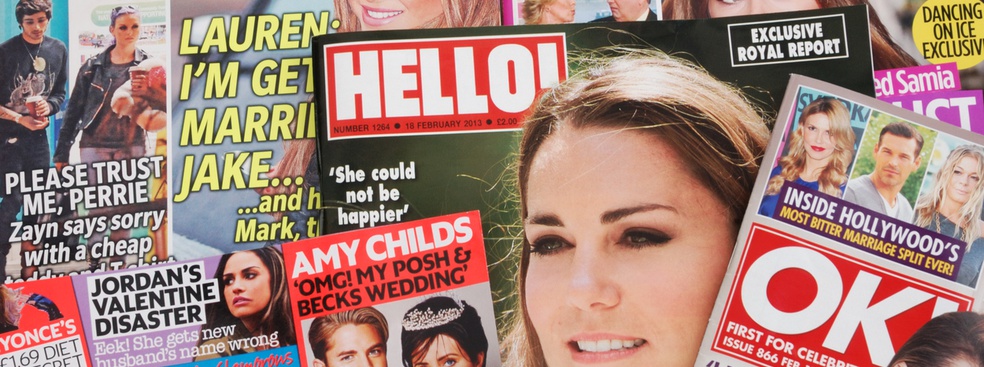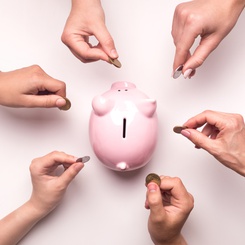On May 19th, you most certainly followed Prince Harry’s wedding to Meghan Markle, as did over 3 billion other people. The couple exchanged their traditional “I dos” at St George’s Chapel in Windsor. Even if you did not have the chance to watch the ceremony, you could not have missed the craze surrounding the event. You could not have not missed Meghan’s dress, or the gifts for the guests, and not even the guests themselves (oh, the lucky 200 that made it to the dinner). You could not have missed the massive crowds lining the route towards the castle, hoping for a glimpse of the famous couple.
Prince Harry and Meghan Markle’s wedding, in comparison to his mother Diana’s and brother William’s, was much more followed. Over six million people tweeted on Prince Harry's wedding day between 10 pm Friday and 11 pm Saturday*, more than three times the number during his older brother's wedding. The Royal wedding is indeed expected to boost the UK economy by nearly £1.1bn, according to experts. Over £70 million** has been spent on memorabilia: mugs, t-shirts, cakes, flags and… condoms. Following the engagement announcement, a number of hotels rushed out “Royal wedding packages”. But how are we to explain the Royal Family celebrity status?
The Royal Family: The Ability to Leverage Key Universal Narratives
Although many royal houses around the world occupy more of a symbolic role than a political one, they keep what we can call an auratic influence. Some royal families have very limited local impact and remain unknown to the public. Other royal families such as the British Royal Family have succeeded in preserving their influence on an international level. The Royal Family is a symbol of cultural heritage in the United Kingdom. A large majority of the British remains attached to the monarchy and the Queen. The Queen, and more broadly the Royal Family, are the embodiment of this cultural heritage. They are the guardians of history and traditional values and are key drivers of national unity.
The Queen is also the leader of the Commonwealth of Nations. She is recognized as the symbol of their free association and establishes a symbolic link between them all. Nevertheless, the Royal Family’s influence goes way beyond the United Kingdom and the Commonwealth’s frontiers; the phenomenon is planetary.
The appeal of the Royal Family is made global thanks to tabloid newspapers that scrutinize its members, their smallest deeds and gestures. The news is then picked up by international press and fed to the public: Princes William and Harry’s weddings, the Diamond Jubilee of Queen Elizabeth II, Kate Middleton’s pregnancies, the children’s names, Princess Charlotte’s first steps, etc. These events were all thoroughly commented upon on social media.
This phenomenon is encouraged by the Royal Family itself. Its members are using media coverage as means of survival. The Royal Family’s position became too fragile because of the opacity of the institution. Symbolic figures rather than real embodiments of power, the Royal Family looked more like a relic of the past, isolated from the citizens and cut off from the world. In order to survive the crisis, it had to adapt, open, open up. Modernity embraced tradition, or vice versa, with the first official broadcast of Elizabeth’s II coronation on TV. This wind of modernity continued to blow with Prince Charles’s wedding to Diana in 1981, and in 1993 when the public was allowed for the first time inside Buckingham Palace. On one hand, the myth is preserved, and on the other, the Royal Family controls the way the myth circulates.
Global media coverage allows the Royal Family to control the image conveyed to the public, but is also a source of important revenue. Restoring castles and living according to royal etiquette is costly. And even though the average Briton remains attached to the Queen, he (or she) is not so comfortable when it comes to covering the expenses of the Royal Family***. Therefore, the members of the Royal Family found themselves constrained to think up of alternative sources of funding. Thus, they have more than voluntarily encouraged the infatuation; they have been active participants in their own uplift to the status of stars. The Royal Family is the writer of its own story.
Buying The Royal Family
The aura we have been discussing here translates into different ways of buying. We are “buying” the Royal Family. In buying tabloid newspapers, and more broadly, in buying international newspapers publishing articles on the Royal Family’s life and lifestyle, we are participating in this buying-the-Royal-Family process. Furthermore, we are watching historical and other movies on them. We are copying them. We are dressing like Kate Middleton, we are wearing our hair like Diana, etc. But what does “buying the Royal Family” actually mean?
The Myth Made Possible
Kings and queens conjure up the mythical figures of princes and princesses as they conjure up the topics of beauty, love, etc. We are at the heart of modern myth, the twists of which we can follow from the inside: success stories, failures, lies, treachery, alliance, etc.
It is interesting to highlight the fact that one of the most representative figures of the Royal Family remains Diana. The beautiful princess marries the prince. Betrayed by her mother-in-law and abandoned by her vile husband, she dies in a car accident. After all, being able to closely follow the Royal Family’s life allows us to live our own modern fairytale. Diana was for 17 years the star of a compelling soap opera. Millions wanted to see her latest hemline, haircut; millions wanted to hear her speak, to follow up her unhappy marriage, her divorce, her lovers… and well, her death. Her sudden death was shocking, but what the public had lost was not a beautiful woman in the turmoil of life, but the icon of a modern myth. And because we are able to follow every twist of the story, the myth becomes reality, and reality is reachable, possible.
This feeling of being active in the Royal Family’s life is made possible by this “reachability”. The myth is open to every single person and is no longer reserved for the happy few. Kate Middleton is not an aristocrat, Meghan Markle is an Afro-American, divorcée, TV star, who is friends with other stars, some of whom are Reality TV Shows Stars. 50 years ago, this wedding could not have been possible. But here we are today and the wedding did take place. In her tweet, Lucy Sempey notes down: “One day you’re 15 and posing outside Buckingham Palace, and 22 years later you’re marrying the Prince”. Meghan has accomplished what every girl has ever wished for. An (almost) ordinary girl became a princess. Unreal.
Reaching Out For the Stars
Tabloid newspapers transform us into voyeurs, the voyeurs that we want to be. They give us access to the life of the rich and powerful. In this lot of celebrities, we can easily and more often find actors, singers, models, sports players, and even the Royal Family.
Quite a few famous people exhibit their lavish lifestyle. Their social status is maintained through and thanks to the highly extravagant and expensive merchandise they tend to buy. For the mechanism of flamboyance to work these objects have to be rendered desirable to those who do not have the means to lead this lifestyle. It is not a matter of spending your money, it is a matter of showing others how you spend your money.
The Royal Family does not have to show off the way Kim Kardashian and Jay Z do. Their lifestyle may remain traditional but it is nevertheless out of reach for the average people (castles, tiaras, carriages, uniforms, etc.). All these “objects of desire” are put on stage on the occasion of different ceremonies that are part of the royal decorum. Major events such as the royal wedding(s) are covered internationally; we become part of the close circle, of the happy few. Tabloid journalists scrutinize every gesture flooding us with stories about Prince Harry’s life of debauchery or Princess Diana’s reception in some palace. We are given access to a desirable out-of-access lifestyle.
It is the trickle-down effect. We are trying to buy similar things and to adopt practices similar to those of celebrities: we dress like Kate Middleton, we wear our hair like Princess Diana. Meghan Markle is even inspiring young girls to get freckle tattoos.
Through global media coverage, the Royal Family has become a brand icon. And to be a brand icon one has to comply with the rationale of the market. Panem et circenses. Bread and games, that is what we seem to demand; and that is what we are getting.
———
* https://www.firstpost.com/world/british-royal-wedding-more-than-six-million-tweets-on-prince-harry-meghan-markles-big-day-thrice-more-than-william-kate-wedding-4476087.html
** https://inews.co.uk/news/uk/royal-wedding-desperate-marketing-mr-kipling-commemorative-condoms-britain-cashing-prince-harry-meghan-markle/
*** https://www.independent.co.uk/news/people/the-biggest-myth-about-the-queen-her-contribution-to-the-british-economy-10491277.html








